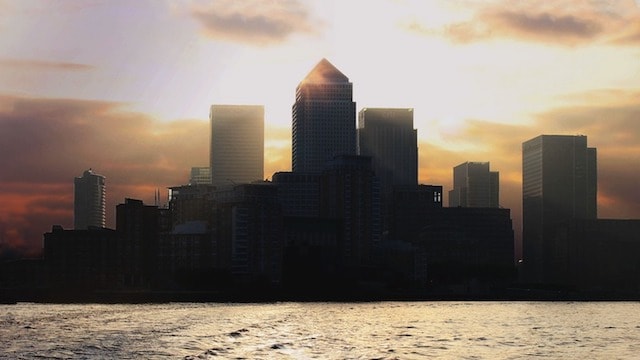At 87p, the Barclays (LSE: BARC) share price is around 50% lower than it was in mid-February. That’s a big plunge, but the stock has been lower.
For example, in the wake of the financial crisis of the noughties, the shares were briefly changing hands around 50p at the beginning of 2009. If Barclay’s revisits those lows, it implies the possibility of a further plunge of more than 40% from current levels.
Will the Barclays share price shoot up again?
That might sound whacky when you consider the firm’s tempting-looking valuation indicators. Indeed, the price, measured against earnings and assets, looks low. But the UK’s economy has a huge financial shock to digest because of the coronavirus lockdown. Many also expect a deep recession.
Does that remind you of 2009? Conditions were similar back then – a huge financial shock followed by a deep recession.
And being the out-and-out cyclical business it is, Barclays tends to be one of the early movers both into and out of recessions. That’s why the plunge recently has been so dramatic. Barclays shares are highly responsive to changes in general economic conditions or to investors’ perceptions about those conditions.
I don’t see much use for the London-listed bank shares as long-term holdings. And I wouldn’t buy them for growth or income from shareholder dividends. But, to me, they can be useful for riding the next up-leg of a general economic cycle.
However, investing like that requires aiming to time your purchase and sell orders. And to be honest, that’s not a great way to proceed. I’d rather ignore the banks altogether and look for ‘proper’ business to invest in. Those with decent, value-generating trading businesses backing them. For example, in the FTSE 100, names such as Diageo, Unilever, SSE, and many others.
Nevertheless, Barclays could shoot up fast when a general economic recovery starts to look possible. Between the beginning of 2009 and the summer of that year, the stock blasted up by around 300%. Sadly, I think a move of that magnitude seems unlikely following the current crisis.
Dividends halted
Since hitting its peak early in the middle of 2009, Barclays has been locked in a wiggly down-trend ever since. And the value indicators have been looking attractive nearly all the way down. My guess is that many investors in the stock market are wary of banks. We’ve seen their cyclicality. We don’t trust them.
On the 1 April, Barclays notified us it cancelled the 2019 dividend and suspended shareholder dividend payments for the rest of 2020. The Prudential Regulation Authority (PRA) required all the major UK banks to preserve capital that way. And for good reason. There are difficult financial times ahead.
I admit cancelled dividends, plunging earnings, and a fallen share price are good indicators of a potential cyclical bottom for Barclays. But I wouldn’t rule out the share falling a lot further. And I’d rather invest in other cyclical shares, such as the FTSE 100’s Ferguson and Whitbread before risking my hard-earned on a bank like Barclays.
